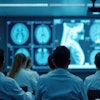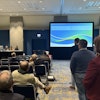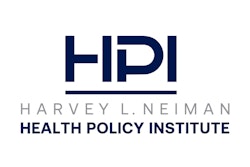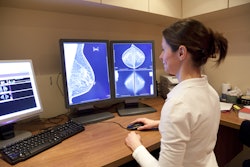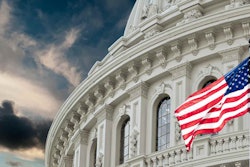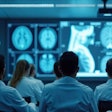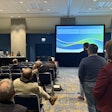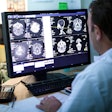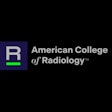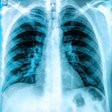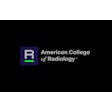As radiology departments continue to employ nonphysician practitioners (NPPs), more scrutiny has been placed upon the quality of NPPs’ work.
Multiple studies from the past year have evaluated the impact of NPPs on patient care and imaging quality. And policies aiming to expand the scope of practice for NPPs continue to be introduced as practices face workforce challenges.
“[NPPs] are extremely essential to our healthcare environment … especially in rural or underserved areas,” said Linda Wilgus, co-executive director of the Radiology Business Management Association (RBMA). “We just need to move cautiously, consider the implications, and strike the right balance.”
What the research says
Radiology practices continue to experience workforce shortages, with a growing and aging population further complicating the issue. And medical specialties that include radiology continue to deal with a limited pipeline of physicians.
In interventional radiology, NPPs take part in procedures such as paracentesis, central venous access, and image-guided biopsies. Prior studies suggest that NPP work in this area helps streamline workflows, reduce wait times, and improve patient throughput.
Wilgus said that NPP use in imaging occurs most often in office-based, nonradiology settings. However, NPP use in diagnostic radiology has its share of controversies.
Eric Christensen, PhD, from the Harvey L. Neiman Health Policy Institute in Reston, VA, has been studying, among other things, trends in NPP utilization among imaging practices. One study he led, published in 2024, found that NPPs are performing more imaging interpretation work than ever. Another study he led, published in September, found that office-based imaging studies are often repeated when read by NPPs.
Eric Christensen, PhD, explains imaging trends for nonphysician practitioners (NPPs).
In yet another study led by the Neiman Institute, the investigators found that in office-based practices, imaging interpretation by NPPs increased by 117%, from 2.5% of Medicare imaging studies in 2013 to 5.5% in 2022. This included a larger share for the following modalities: x-ray (+114.5%), ultrasound (+124%), CT (+123.6%), MRI (+134.8%), and nuclear medicine (+86.7%).
While workplace challenges may tempt practices to have NPPs more involved in imaging interpretation, experts say this should be avoided.
Christensen and colleagues' September 2025 study reported that, among other findings, the odds of repeat imaging within 90 days for studies interpreted by NPPs versus radiologists included the following: 35% for x-ray, 141% for ultrasound, and 156% for MRI.
“That just does not seem like a sustainable idea for radiology,” said Jonathan Medverd, MD, from the Harborview Medical Center in Seattle, WA. Medverd wrote an editorial published in September in the American Journal of Roentgenology that called for NPPs not to be used in this manner and for an emphasis on appropriate patient care, radiology’s high standards, and continued advocacy.
Jonathan Medverd, MD, discusses differences in training between radiologists and NPPs.
Medverd said that while NPPs are an important part of patient care, more risk comes into play when they interpret images, even when they’re interpreting in a “very narrow field.” He cited bone radiographs as an example.
“You still need to know a lot about medical physics, pathophysiology, and you need to know more than just x-ray because x-rays are often read in conjunction with other studies,” he said.
How state policies are shaping NPP work in imaging
State laws vary on the scope of practice that NPPS and physician assistants can perform.
The American College of Radiology (ACR) in 2023 tracked the following: 41 bills in 21 states expanding physician assistant scope, 40 bills in 18 states expanding scope for advanced practice registered nurses (APRNs), and full practice authority granted to APRNs in 26 states plus Washington, DC.
Physician assistant scope expansion bills have been passed in Arkansas, Arizona, Colorado, and Montana in recent years. The ACR in February said it is tracking more than 58 of these types of bills across 22 states.
“As an industry, we need to watch and make sure that those scope of practice laws keep our patients and our communities safe,” Wilgus said.
One state law in California signed in 2022, Assembly Bill 890, allows nurse practitioners in specified practice settings across the state to begin practicing without physician supervision. The bill’s original language would have also allowed NPPs to order, perform, and interpret imaging. However, the ACR and the California Radiology Society successfully advocated for the removal of this interpretation from the final bill.
Wilgus said this “underscores the importance of legislative vigilance and advocacy by radiology professionals.”
Linda Wilgus explains risks to patient care when NPPs are charged with interpreting images when radiologists are not available.
In December 2024, the Centers for Disease Control and Prevention (CDC) solicited public comments on allowing NPPs to interpret chest x-rays for pneumoconiosis, which is caused by inhaling harmful dust over long periods of time. This is usually contracted by workers in mining, textile milling, and agriculture, among other industries.
Currently, only certified radiologists who are trained under standards set by the National Institute for Occupational Safety and Health (NIOSH) can perform these exams. The CDC’s proposal raised questions about quality assurance, training standards, and public health implications.
“What’s happening in [radiology] is that fewer radiologists are going after B reader training, so [imaging practices] are having difficulty finding appropriate resources to perform this interpretation,” Wilgus said.
Bridging gaps and finding solutions
Christensen said radiology leaders should look outside of their practices to identify knowledge gaps between radiologists and NPPs.
“I don’t necessarily think this is a radiology problem,” he said. “I think that the crux of the issue is what they’re doing in radiology practices versus what [NPPs] are doing in nonradiology practices.”
Christensen added that the Neiman Institute team is currently studying trends in NPPs working in interventional radiology.
Medverd in his editorial called for continued advocacy to prompt the passage of the Resident Physician Shortage Reduction Act to expand Medicare-supported training positions by 14,000 over seven years. This would help balance physician training, he wrote.
“If radiology is not deliberate and united, then influence from pressures of the resource-based relative value system at the core of U.S. healthcare financing may distort the specialty’s higher goals and corrupt its core mission,” Medverd wrote.
He added that having more registered radiology assistants could assist with supporting high quality care since their training is more specialized.
Wilgus said that radiology continues to have thoughtful discussions about NPP work in imaging as healthcare continues to evolve.
“We need our physician extenders in order to meet the supply and demand needs of our patients and communities, but we also need to make sure we are doing it the right way,” she said.

